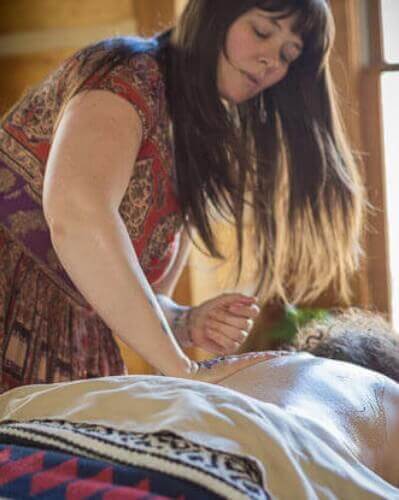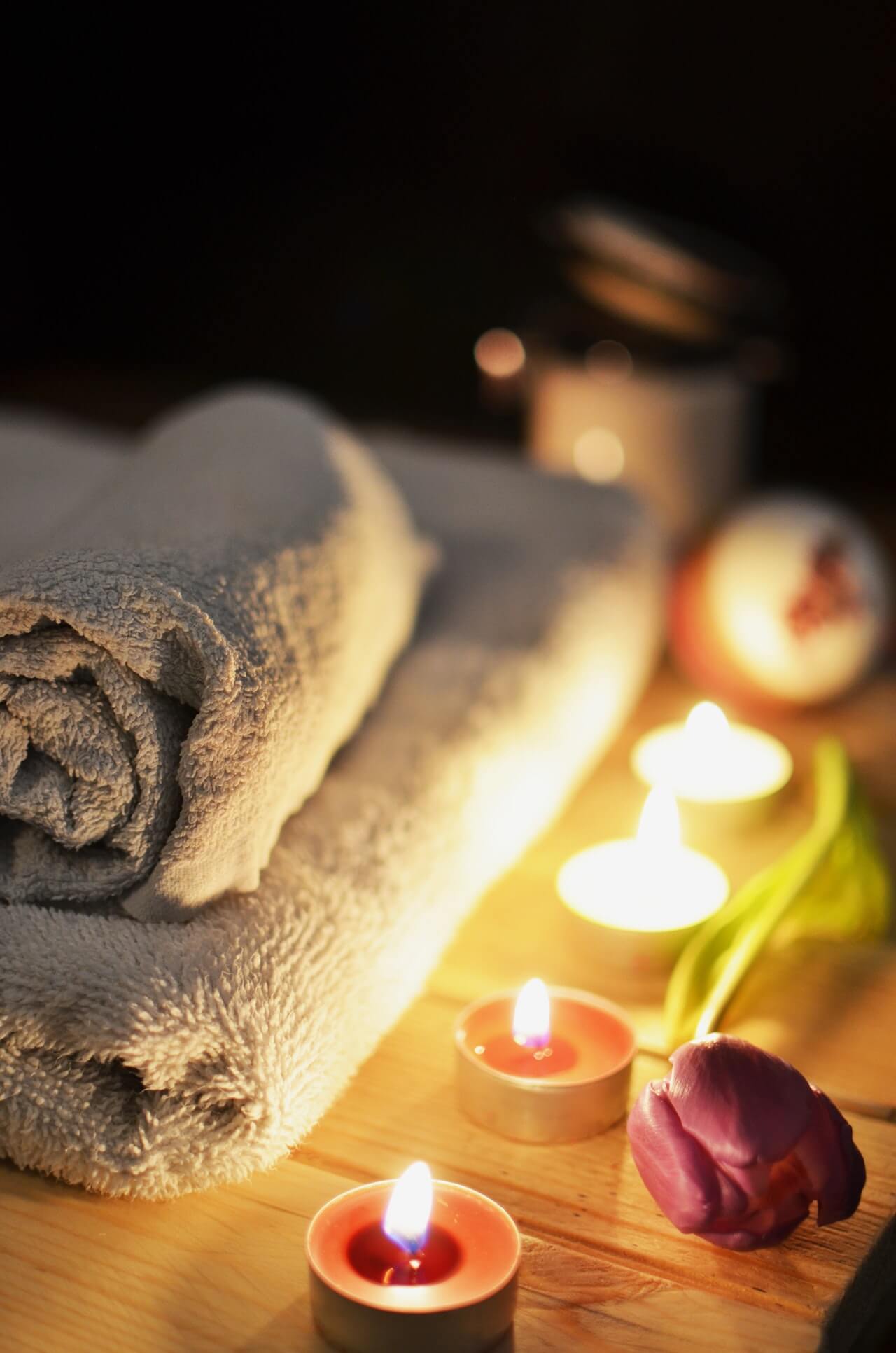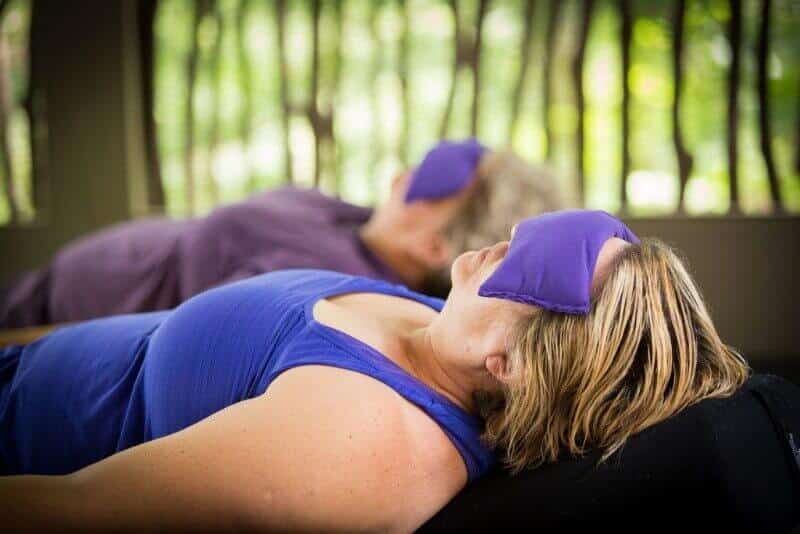4 Evidence-Based Health Benefits of Massage

Most of us go to a doctor before we try a masseuse.
You've been crouched over a computer all day and your neck and lower back ache. Wouldn't a massage feel good? You can't sleep because you're worried and stressed about how you're going to pay all of your bills by their deadlines. You feel a migraine coming on behind your eyes. Overall, you just feel uncomfortable in your body and worry that these ailments will lead to bigger problems like worsening arthritis, cardiovascular disease, or depression. Ultimately, you think you should see a doctor in order to find out what pain medication he or she might prescribe for your symptoms. But wait, your first instinct might have been a better idea. In fact, massage treats more than a few ailments.
If any of these experiences sound familiar, you have common ground with millions of Americans. However, many symptoms of ill-health can be naturally alleviated by something apart from the medical world: massage. It almost seems too simple to be true. Yet, studies show that massage alleviates a whole host of symptoms in a very real way. And even though a massage can be expensive, it's not a lot when you compare the cost to that of going to a medical doctor. Likewise, if you look at the possible side effects of drugs to treat your symptoms with the expense of a massage, the choice is clear. Health benefits aside, it simply feels good to be oiled, brushed, rubbed and rolled while surrendering to your own ability to repair itself.

4 evidence-based health benefits of massage:
1) Eases lower back pain.
Americans are rife with low-back pain. Unfortunately, it is a pervasive and debilitating condition that affects as many as 8 out of 10 Americans, according to TIME Magazine. Additionally, Americans collectively spend $50 billion per year to medical professionals and pharmaceuticals in attempts to ameliorate their back pain, as reported by the National Institute of Neurological Disorders and Stroke.
However, study after study show just how helpful massage can be to mitigate these symptoms. For instance, a 2011 study published in the Annals of Internal Medicine, reports massage as a substantial treatment for low-back pain. The study indicates that Swedish and structural massages are the most beneficial types of massage when it comes to alleviating this type of pain.
Additionally, a 2011 study by the National Institutes of Health also upholds the notion that massage can help decrease lower back pain. The study goes on to buttress the idea that massage even decreases oft-accompanied anxiety and depression. Moreover, the institute suggests that weekly or biweekly massages also help decrease stiffness in the back.
Osteoarthritis is often the underlying cause of low back pain. For this reason, it's important for sufferers to see a medical doctor. However, receiving regular massage treatments is a great way to ease suffering and stave off more acute pain. Also thrown in the bargain is increased range-of-motion according to a 2006 study published by the Yale Prevention Research Center.

2) Lowers Blood Pressure and Improves Heart Health.
According to the Centers for Disease Control and Prevention, high blood pressure puts Americans at risk for heart disease and stroke, which are the leading causes of death in the US. In fact, about 1 out of every 3 adults have high blood pressure—that's 75 million American people. In a recent clinical trial, Swedish massage was shown to lower blood pressure in 50 women with high blood pressure.
Different kinds of massage have been linked to various changes in blood pressure. For instance, Trigger point therapy actually causes heart rate and blood pressure to rise because of a pain response. On the other hand, Swedish massage lowers blood pressure by stimulating the vagus nerve, and thus inhibiting the stress response. Likewise, deep-tissue massage has been shown to lower pressure. However, the reason for this stems from the increase in oxygen intake as well as lowering heart rate.
3) Helps with Insomnia.
In a recent study published by the National Institute of Health, 44 postmenopausal women showed signs that Chinese therapeutic massage helped treat their insomnia. For the participants in the study, massage aided the duration of stage 3 and 4 sleep, which are important sleep phases for activating the immune system to repair the body. These longer periods of sleep were attributed to the reduction of levels of substance P, (a peptide composed of 11 amino acids), and other inflammatory agents.
Massage relaxes and calms an individual. This state triggers the release of endorphins that serve to reduce heart rate, and increase circulation.

4) Treats Migraines and Chronic Headaches.
Rewrite-38 Million people suffer from migraines and chronic headaches in the US. These episodes can be dramatic and debilitating. In a clinical trial of 47 patients suffering from migraines, massage proved to reduce frequency. The type of massage used in the trial included myofascial release and deep ischaemic compression of the back.
Because migraine triggers commonly involve stress, both physical emotional, massage can address the initial episodes of the stress by decreasing cortisol levels. Additionally, massage decreases heart rate and reduces anxiety. For example, a recent study found that when overall stress is decreased, triggers for migraines decrease as well. Massage also is known to induce longer periods of sleep which can reduce levels of substance P and other inflammatory agents that can build into a migraine trigger. reduce the frequency of the episodes of stress.
For some people, the intensity of a migraine is unbearable. In a clinical trial, massage alleviated headache intensity in people experiencing debilitating headaches in the forehead, behind the eyes, and in the neck. 105 participants reported a decrease in the intensity of their headaches after a massage.
The discipline of massage therapy recognizes trigger points as sensitive areas of the body that are associated with migraines or headaches. A study showed that manipulation of these trigger points reduced pain for 65 patients. Thus, the pain receptors at these points served to respond to massage in a way that gave relief to these migraine suffers.
Skyterra offers a wide range of massages.
Skyterra Wellness Retreat offers various styles of massages that all aim to reduce inflammation, calm the mind and body and serve as a wellness tool. From shiatsu to deep tissue massage, the therapists' techniques work to heal areas of tension and chronic pain. These sessions can be to help overall range of motion or target specific regions of the body with the greatest need. If guests are unsure of the exact massage that they want, Skyterra's massage therapists do a thorough overview of the specific body pain patterns and develop a treatment that is best suited for individual needs. Each session is complemented with muscle and joint salve, warm towels, and if needed, cold compresses.